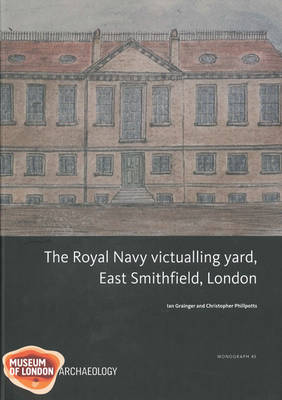The Royal Navy victualling yard was excavated in 1983-8 as part of the Royal Mint site. Founded in 1560, on the site of a Black Death cemetery and the suppressed Cistercian abbey of St Mary Graces, it was the first large-scale naval food supply base in Britain and remained the principal one until the 18th century. The yard closed in 1785, having proved inadequate for the needs of the expanding Georgian navy.
A substantial part of the ground plan of the yard was recorded, including salt houses and pickling sheds, slaughterhouses and yards, bakeries, coopers workshops, storehouses, and the offices and dwellings of yard personnel. The evidence suggests that food processing was increasingly industrialised from the late 17th century onwards. The excavated remains are compared to the substantial documentary evidence available, particularly two detailed plans of 1635 and 1776. The success and ultimate failure of the yard as a supply depot is assessed, including the extent to which former abbey buildings were reused by the navy and the deleterious effect this had. The work reported on here represents the most extensive excavation and post-excavation analysis of an early post-medieval naval victualling establishment in this country.
- ISBN10 1901992896
- ISBN13 9781901992892
- Publish Date 30 April 2010
- Publish Status Active
- Publish Country GB
- Imprint Museum of London Archaeology
- Format Hardcover
- Pages 140
- Language English
